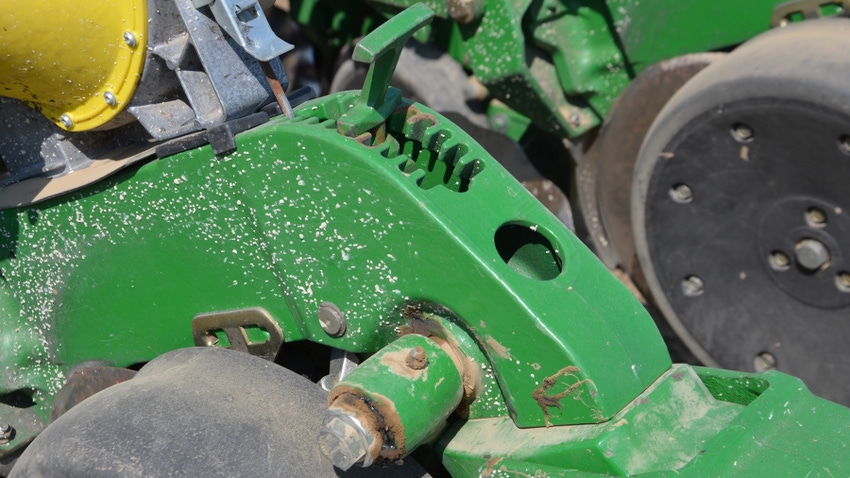
Your planter could be state-of-the-art, equipped with thousands of dollars’ worth of technology designed to make planting more precise. Yet the quality of your stands may rest on something as basic as a T-handle.
Who decides where to put the handle on each row? You do. Who decides to move it up or down to change depth? You do.
“It’s very basic, but one of the most important things you must decide when you start planting in each field,” says Steve Gauck, a regional agronomy manager for Beck’s based near Greensburg, Ind. “Either have someone dig and check seed depth, or stop the tractor and do it yourself, in each new field or when conditions change.
“It’s not enough to check just a couple rows, either. We’ve found that row units set at the same setting may plant at different depths, even on a new planter. A half-inch variation in depth row to row can be a big deal. Unless you checked opener depth on every row ahead of time, check seed depth row by row.”
Planting corn
The 2022 Purdue University/Indiana Prairie Farmer replicated study at the Throckmorton-Purdue Ag Center compared planting depths from 1 to 3 inches for two corn hybrids.
“The two hybrids varied in response to seeding depth,” says Dan Quinn, the Purdue Extension corn specialist who summarized results. One hybrid yielded more at 1-inch and 2-inch planting depths vs. 2.5 inches and 3 inches. However, the second hybrid yielded more at planting depths deeper than 1 inch. Put differently, one hybrid gave up yield planted too deep, and the other lost yield planted too shallow.
This was one year and one test, Quinn cautions. “It does highlight the importance of choosing the correct planting depth,” he says. “Across both hybrids, a 2-inch planting depth resulted in the most consistent yields.” View full results here.
Planting soybeans
Gauck monitors the Soybean Watch field, an Indiana Prairie Farmer project sponsored by Beck’s. In 2022, he remembers visiting with the grower about planting depth. Due to late rains, the field couldn’t be planted until June 4. He planted no-till fields before heavy rains, but this field was tilled.
After the first pass, the grower was afraid beans were socked in too deep — some 2.5 inches or more. So, he raised T-handles to shallow up a half-inch. After another round, beans were easier to find, but were still socked in about 2 inches deep. He moved handles a second time, shallowing up to 1.5 inches. His only concern was that with a dry spell predicted, soil might dry out before beans germinated.
“It was a good example of why you check settings field to field,” Gauck says. “As it turns out, there was no difference in final stand. The shallower-planted beans got up quicker, but it didn’t matter in the end.
“However, if weather conditions had worked out differently, it might have made a big difference. You simply must make your best decision based on weather conditions.”
About the Author(s)
You May Also Like




